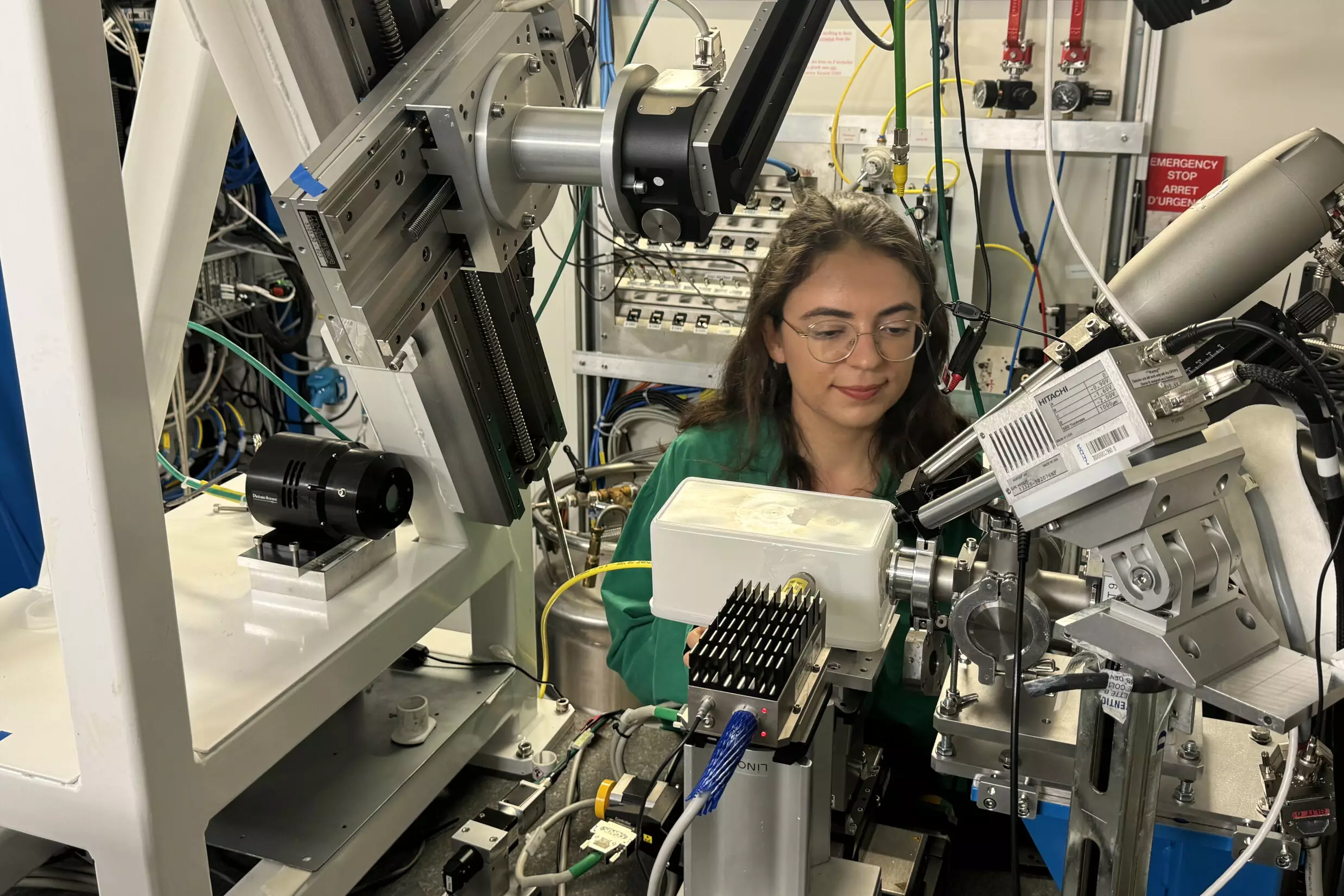Uranium, an element often overshadowed by its radioactive reputation, plays a pivotal role in the world of chemistry, particularly within the actinide series. Known for its intricate electron configurations, uranium exhibits a unique blend of bonding behaviors that intrigue scientists across various disciplines. Recent research conducted by an international team at the Helmholtz-Zentrum Dresden-Rossendorf (HZDR) has delved into the distinctive properties of low-valent uranium compounds, revealing new insights that deepen our understanding of this complex element.
The study took place at the Rossendorf Beamline (ROBL) of the European Synchrotron Radiation Facility (ESRF) in Grenoble, where a range of advanced techniques was leveraged. Researchers employed resonant inelastic X-ray scattering (RIXS) to investigate the behavior of uranium’s 5f electrons—electrons that, despite residing in inner shells, are instrumental in defining the element’s chemical properties. According to Clara Silva, a Ph.D. student at HZDR, this research focused specifically on low-valent uranium, which exhibits more electrons in its inner shells compared to its more stable counterparts.
Her findings underscore the significance of the 5f electrons in uranium’s bonding with other elements. More intriguingly, the study’s painstaking efforts culminated in the identification of the tri-valent oxidation state U(III) in uranium, marking a milestone achievement for the field. The research, described by Professor Kristina Kvashnina, who heads ROBL and is the director of the Institute’s Department of Molecular Structure, highlights the value of using specialized equipment and stringent safety protocols when dealing with the radioactive nature of uranium.
The research team utilized the sophisticated HERFD-XANES method combined with RIXS, allowing for in-depth analysis of uranium’s electronic structure. By bombarding the uranium samples with X-rays and meticulously measuring the energy lost during scattering, the researchers gained unparalleled insights into how uranium atoms bond and interact with elements like fluorine and chlorine. This intricate interplay underscores the complexity of actinide bonding and reinforces the relevance of understanding uranium’s 5f electrons.
Through such advanced techniques, scientists were able to challenge existing theories regarding actinide bonding, revealing that uranium’s 5f electrons demonstrate remarkable sensitivity to changes in their local environment. In doing so, they observed that this sensitivity significantly influences the ionic character of uranium’s bonds, presenting new avenues for future research
Experimental Challenges and Environmental Considerations
Studying low-valent uranium presents its set of hurdles, primarily because these compounds are less stable than their higher-valent counterparts. The researchers managed to maintain controlled experimental conditions, conducting their investigations under anoxic atmospheres and at extremely low temperatures to prevent unwanted reactions. This careful approach safeguarded the integrity of uranium samples, ensuring the precision of their findings.
Moreover, the intricacy of the data necessitated the deployment of sophisticated theoretical methods to model the electronic structure accurately. This combination of practical experimental techniques and advanced theoretical frameworks allowed the researchers to untangle the complexities of uranium compound interactions efficiently.
Implications for Radiation Safety and Beyond
Beyond enhancing fundamental scientific comprehension, the implications of this research extend into practical realms. The unique properties of low-valent uranium compounds, particularly their low solubility, render them significant in contexts such as radiation protection and the durability of radioactive waste repositories. Understanding how these compounds behave under various conditions can potentially mitigate the environmental risks associated with uranium contamination.
Moreover, the revelations made in this study pave the way for refined theoretical models that predict the behaviors of uranium and similar complex elements. Such advancements in understanding could have far-reaching effects across numerous scientific domains, from nuclear science and materials chemistry to environmental safety and disposal strategies.
The recent exploration of low-valent uranium compounds marks a significant leap in the field of actinide chemistry. By illuminating the behavior of uranium’s 5f electrons and revealing the characteristics of low-valent compounds, this research not only challenges previously held theories but also opens the door for further investigations. As we seek to navigate the complexities of nuclear materials and their implications for both science and safety, this study lays the groundwork for an exciting new era in actinide research.


Leave a Reply